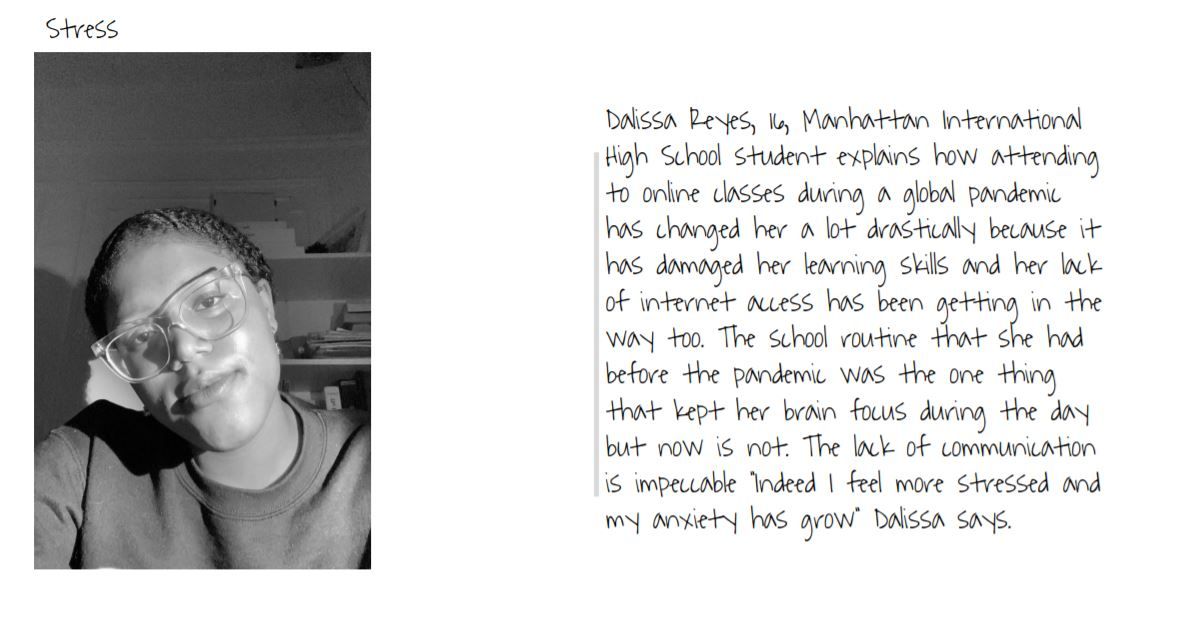This unit was created by Tania Mohammed, an ELA teacher, in collaboration with Nina Kogut-Akkum, a 10th and 11th-grade social studies educator at The Manhattan International High School in New York City as part of the fall 2020 Pulitzer Center Teacher Fellowship program on Arts, Journalism, and Justice. It is designed for facilitation across twelve 60-minute interdisciplinary class periods incorporating social studies content and ELA skills.
For more units created by Pulitzer Center Fellows in this cohort, click here.
Objectives:
Students will be able to...
- Evaluate how marginalized communities have been photographed throughout American history.
- Explore the relationship between America’s founding principles and marginalized communities using Pulitzer Center photo stories.
- Practice photojournalism techniques including shooting, editing, captioning, and curating photographs.
- Create photo essays exploring themes of democracy and justice in local communities.
- Present photo essays to peers.
- Give and receive feedback on photo essays.
Unit Overview:
In this unit, students will review photo stories that explore how the rights of certain marginalized groups in the U.S. have often been denied by government policies and negligence. As a result of the government’s actions, people in marginalized groups such as Black Americans, Native Americans, and immigrants have been suffering from unemployment, housing, poverty, lack of healthcare, stolen lands, and racial injustice.
For the final project, students will be asked to use the examples of photo stories as inspiration to take journalistic photos and write a short essay about injustices they notice in their own communities. The topic for their project can, but does not have to, relate to Black Americans, immigrants, or Native Americans, as long as it focuses on an issue that questions whether the U.S. is living up to its founding principles and ideals.
Resources for Facilitating this Unit:
Click here for a PDF outlining lesson plans for this unit, including warm-ups, discussion questions, activities, daily presentation slides, homework assignments, and worksheets.
Performance Task:
For a detailed overview of the task, including guidelines and a rubric, please review the Photo Essay Task and Rubric Worksheet.
Students create their own photo essays that responds to one of the following questions:
- How do the founding principles apply or not apply to your community?
- How has your community been affected by injustice?
Click here to view examples of photo essays created by students at Manhattan International High School in fall 2020.
Since this unit is planned for remote instruction, Pear Deck is a recommended tool to make slides interactive and more engaging. It allows for immediate student responses and enables teachers to provide instant feedback.
Common Core Standards
CCSS.ELA-LITERACY.RI.9-10.1 - Cite strong and thorough textual evidence to support analysis of what the text says explicitly as well as inferences drawn from the text.
CCSS.ELA-LITERACY.RI.9-10.2 - Determine a central idea of a text and analyze its development over the course of the text, including how it emerges and is shaped and refined by specific details; provide an objective summary of the text.
CCSS.ELA-LITERACY.RI.9-10.3 - Analyze how the author unfolds an analysis or series of ideas or events, including the order in which the points are made, how they are introduced and developed, and the connections that are drawn between them.
CCSS.ELA-LITERACY.W.9-10.2 - Write informative/explanatory texts to examine and convey complex ideas, concepts, and information clearly and accurately through the effective selection, organization, and analysis of content.
CCSS.ELA-LITERACY.W.9-10.2.A - Introduce a topic; organize complex ideas, concepts, and information to make important connections and distinctions; include formatting (e.g., headings), graphics (e.g., figures, tables), and multimedia when useful to aiding comprehension.
CCSS.ELA-LITERACY.W.9-10.2.B - Develop the topic with well-chosen, relevant, and sufficient facts, extended definitions, concrete details, quotations, or other information and examples appropriate to the audience's knowledge of the topic.
CCSS.ELA-LITERACY.W.9-10.2.C - Use appropriate and varied transitions to link the major sections of the text, create cohesion, and clarify the relationships among complex ideas and concepts.
CCSS.ELA-LITERACY.W.9-10.2.D - Use precise language and domain-specific vocabulary to manage the complexity of the topic.
CCSS.ELA-LITERACY.W.9-10.2.E - Establish and maintain a formal style and objective tone while attending to the norms and conventions of the discipline in which they are writing.
